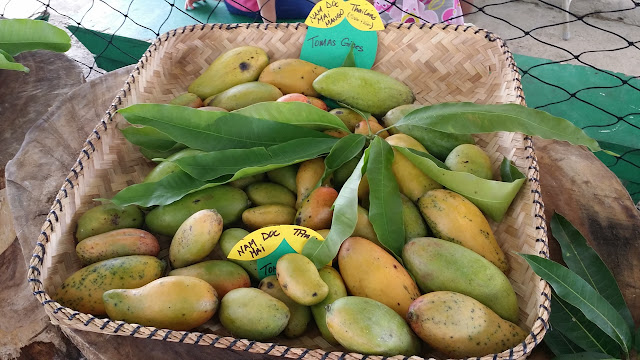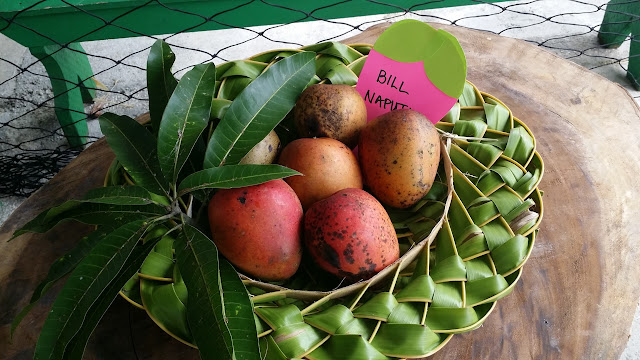Guam beats Turkmenistan and India!
Guam's national soccer team, known as Matao, won both their matches against Turkmenistan (1-0) and India (2-1) in qualifying games for the FIFA 2018 World Cup! I neither care about nor know the rules of soccer, but it was exciting nonetheless. Plus, one of the players is a friend, so that makes it more fun!
Here's some photos from the match, taken from the local newspaper. Guam is blue, Turkmenistan is white. Read the article at GuamPDN if you want to know more/like soccer.
 |
| Photo by Mark Scott/GuamPDN |
 |
| Photo by Mark Scott/GuamPDN |
 |
| Photo by Mark Scott/GuamPDN |
 |
| Photo by Mark Scott/GuamPDN |
 |
| Photo by Mark Scott/GuamPDN |
 |
| Photo by Mark Scott/GuamPDN |
 |
| Photo by Mark Scott/GuamPDN |
 |
| Photo by Mark Scott/GuamPDN |
 |
| Photo by Mark Scott/GuamPDN |
 |
| Photo by Mark Scott/GuamPDN |
 |
| Photo by Mark Scott/GuamPDN |
 |
| Photo by Mark Scott/GuamPDN |
 |
| Photo by Mark Scott/GuamPDN |
 |
| Photo by Mark Scott/GuamPDN |
 |
| Photo by Mark Scott/GuamPDN |
Matao will play another qualifying match against India next week, and the team will travel to Iran (!!!) in September for their final match in this round. (If you're wondering why Guam has a national team despite being part of the USA... I have no good answer for that. Nobody seems to. Just go with it.)
Mango Festival... and Micronesia Festival
Last weekend was the Mango Festival, held in the village of Agat. I haven't really ever been exposed to mangoes; they were always that weird expensive exotic fruit that I didn't know how to pick at the grocery store. I bought a mango when I first got to Guam, but it didn't smell good so I waited for it to ripen, but it started exuding brown fluid so I threw it away.
Now, if you're thinking, "Ashton, you've eaten a lot of weird stuff, how have you never tried a mango???" then I have no good answer for that either. Sometimes that's just how things work.
So basically, I tried my first mango at the Mango Festival! I ate a mango-cream cheese pie, which I think was essentially a poor/lazy-man's mango cheesecake. It was very good! But then I ate a pickled mango, and that was absolutely gross. I tasted spicy mango jam, which made my mouth hurt. I ate some mango fry-ice (which is basically juice poured onto a super-cold surface and mixed around until it freezes) and that was alright but I don't think it was made with real mangoes.
There was also a mango competition! I think the festival was a little dampened by Typhoon Dolphin, which apparently knocked all the mangoes off the trees and made it a bad mango year. Still, I didn't know there were so many types of mangoes!
 |
| This one really should have one, in my opinion. |
 |
| The sign said don't touch the mangoes!!! I almost called the mango police on this crazy rule-breaker. |
 |
| It's really the opposite of frying. The metal is super cold and freezes the juice. |
 |
| This lady is very popular! |
Finally, at the end of the festival, I was generously given a real actual mango! It smelled good and I was really excited to eat it... but it was gross. It tasted like the butter they use on movie theater popcorn. Oh well, it's always fun to try new things!
The Micronesia Festival, unfortunately, wasn't that exciting. I did get to pet a monitor lizard and a coconut crab, but it was very crowded and there wasn't much food. (Which is, of course, always my priority.)
Submarine scariness
I went on my first non-work boat dive this past weekend! It was nice, but honestly neither site impressed me much. We saw some nice fish, so it wasn't a total bust. I guess I'm getting spoiled!
Those who follow me on instagram may remember this picture...
Well, my wish finally came true. I saw the submarine up close and personal while diving. We were warned by the boat captain that it would be going around, and that we should try to stay away from it because it's mildly dangerous and can suck you into its propellers. A guy in Saipan (a nearby island) recently lost his leg to a submarine! We spotted it a few times during our second dive, but it wasn't a big deal--until the end of the dive.
See, sound travels differently underwater, so it's nearly impossible to tell where or how far away the sound of a sound is. We heard the submarine during the whole dive, a high-pitched whirring noise, but we rarely saw it. Then, during our safety stop, it suddenly came out of nowhere and was right there, coming straight for us! We tried to swim away, but the submarine was faster. It was scary!
 |
| It's about 40 feet long and can move a lot faster than I can underwater! |
Were we in any real danger? Probably not. But it was still loud and fast and coming right for us, and I would prefer to never see that submarine again!
Other updates
My car is still waiting busted and waiting for parts to be installed. I ordered the parts from a sketchy website but they showed up in a week! (That is super fast here.) Until my car is running again, I'm relying on the charity of friends to either give me rides or loan me vehicles. Fortunately, I've got a pretty great little community around here and I've obtained FOUR cars in a span of two weeks! (I'm returning them as I go, I'm not just collecting cars.) I feel very lucky to have such a generous social circle!
I was invited to a barbecue last week, which was fantastic and full of delicious food and wonderful people. I saw something called "s'mores dip" making the rounds on the internet and knew I had to try it, so the barbecue was the perfect opportunity! It's very simple: pour a bag of chocolate chips into a pan, stuff the pan full of marshmallows, then bake it until everything is gooey and golden brown. Then you use graham crackers as the chips! Brilliant.
Before photo...
...and after photo. IT'S SO BEAUTIFUL.
I also got to take this selfie with their pet carabao!
Here's a short video of the carabao:
And that's about all that's happened in the past two weeks! Watch out for more underwater photos soon! :)
Cheers,
Ashton


















































